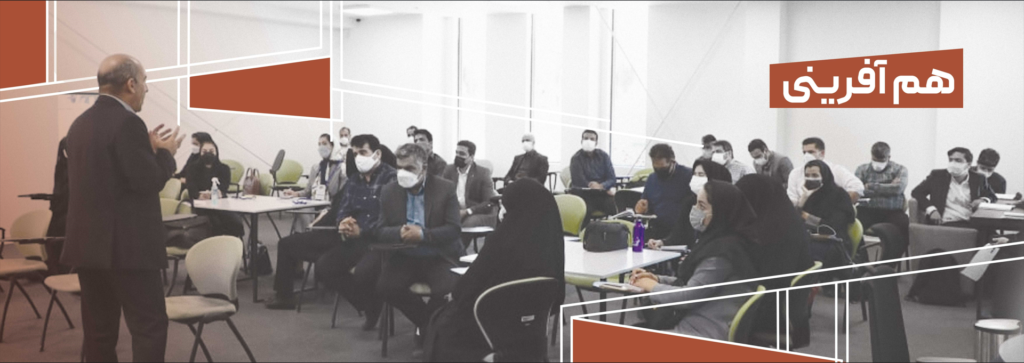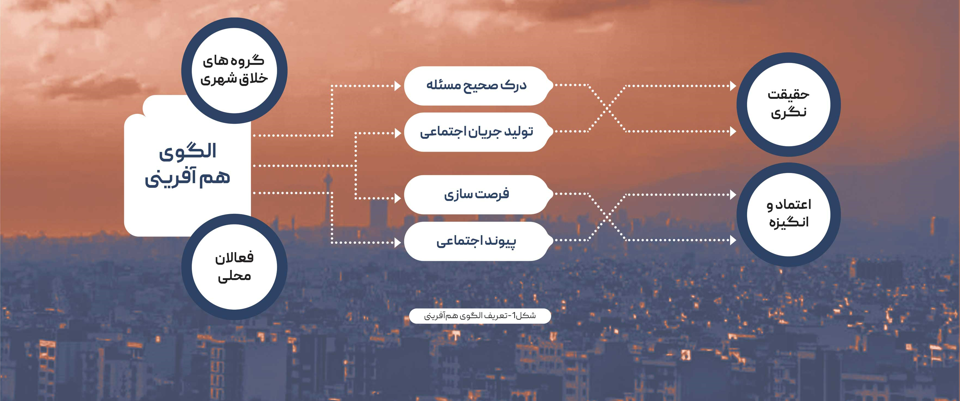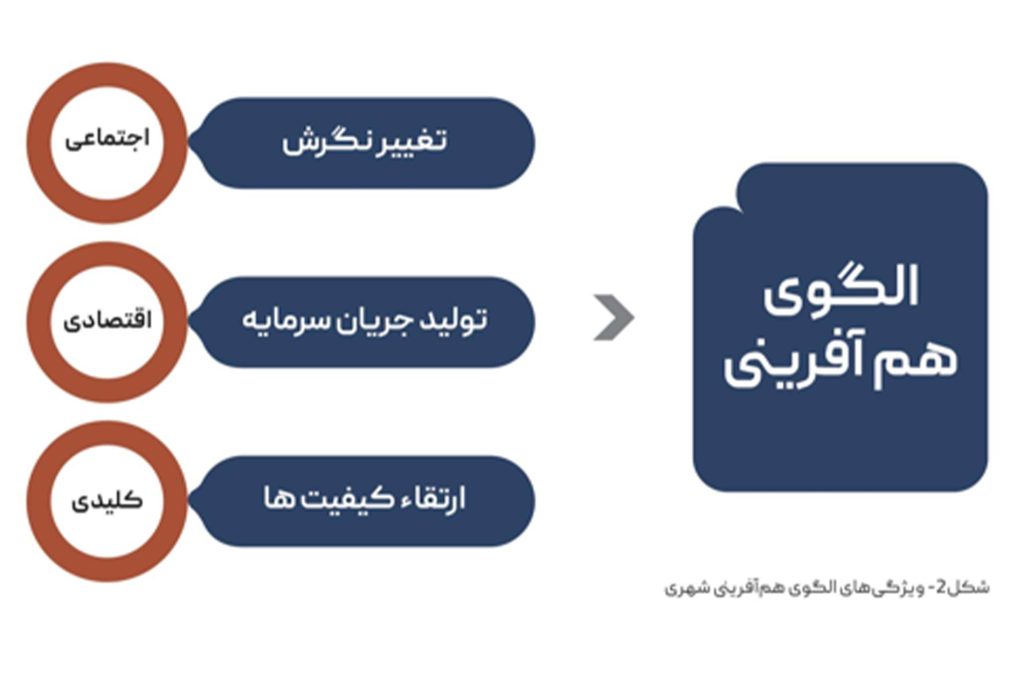
“Urban co-creation” is the title of a series of events that create an interactive platform between experts, professionals and concerned people and local community activists to design innovative solutions related to urban issues. The platform provided in co-creations includes all the needs of a dialogue space and intelligent interaction between the stakeholders and stakeholders related to the issue. Hence, it can be said that co-creation is a type of interactive event in which motivated and creative participants are active in various social, economic, technical and management fields with different specializations (architecture, urban planning, green space, environment, industrial design, graphics, sculpture). , painting, sociology, psychology, urban economy, urban management, programming and new technologies
They come together and get familiar with the proposed problem and relevant national and local viewpoints in the form of face-to-face and virtual workshops, with the help of specialized mentors, they create an innovative idea or work as a practical and operational solution design.
The concepts of “situation assessment” and “problem discovery or identification” are among the planning concepts that are used in the majority of modern planning processes and methods such as strategic planning, system planning, etc. But what distinguishes the nature of these concepts in the “People’s City” platform and causes the formation of a different process from the mentioned types of planning is the “asset-based” approach that governs it.
The assessment of socio-economic, physical and spatial conditions in cities and the determination and formulation of development issues, in the form of common planning processes and patterns, have been affected by the opinions of specialists and experts who may benefit from the opinions of a limited number of city dwellers in the process of recognition and discovery. be slaves On the other hand, in common decision-making methods, the emphasis on the definition of operational projects (mostly civil) relies on institutional financial resources, which are provided by urban management or macro-management (government budgets such as the Ministry of Interior).

What is interactive planning and design?
Interactive planning and design, which forms the basis of the co-creation event, is a multifaceted process that strengthens the skills of experts in the broad fields of user experience design, human-environment relationship, and technology and industrial design in order to build and analyze minimal functional products or services. This can be one of the most effective educational and operational experiences for planners, designers, and idea developers to achieve teamwork and team skills, idea generation, problem solving in a short time, and also increase the level of management productivity in cities.
The concepts of “situation assessment” and “problem discovery or identification” are among the planning concepts that are used in the majority of modern planning processes and methods such as strategic planning, system planning, etc. But what distinguishes the nature of these concepts in the “People’s City” platform and causes the formation of a different process from the mentioned types of planning is the “asset-based” approach that governs it.
The assessment of socio-economic, physical and spatial conditions in cities and the determination and formulation of development issues, in the form of common planning processes and patterns, have been affected by the opinions of specialists and experts who may benefit from the opinions of a limited number of city dwellers in the process of recognition and discovery. be slaves On the other hand, in common decision-making methods, the emphasis on the definition of operational projects (mostly civil) relies on institutional financial resources, which are provided by urban management or macro-management (government budgets such as the Ministry of Interior).

Services that can be provided and duration of co-creation events:
Mammoth Urban Innovation Studio startup as the only center for accelerating urban creative projects in Iran with planning, design,
Specialized technologies (Space Syntax, GIS Modeling), graphic design, content production and programming by proposing to hold co-creations with various topics to vice-presidents and commissions related to urban management as well as business owners and brands active in the private sector, while strengthening various interactive skills, value Spatial and social creation, creation and development of business and optimal management, tries to facilitate the connection of urban management with capable, creative and idea-generating people at the local, regional, national and international levels.
- Identifying and formulating the problem with the participation of activists, experts and interested parties
- Calling and initial evaluation of applicants
- Forming a data bank of creative and capable people applying to participate in co-creation
- Holding a pre-event “introducing the topic and process of co-creation” for the participants
- Holding online and face-to-face specialized workshops
- Holding “team building and initial idea generation event (with specialized mentoring)”
- Holding an in-person and online event of specialized monitoring
- Conducting the judging and closing session
- Compilation of the “Innovative Ideas Bank” document presented at the event
- Providing analytical report and evaluation of the event process and exploitable outputs
Co-creation events have three specific types that are determined based on services and duration. The following table provides a detailed description of these types:
Up to three online workshops, team building, mentoring and face-to-face ideation
A maximum of three online workshops and two face-to-face workshops, team building, mentoring and face-to-face ideation
At least 15 online workshops, 3 days of face-to-face team building and mentoring, face-to-face ideation, medicine and conclusion
Expected outputs:
- Providing innovative and optimal solutions in the shortest possible time
- Creating a database of expert, capable and creative people
- Create a bank of innovative ideas related to the target problem/issues
- Networking and development of the creative community ecosystem

